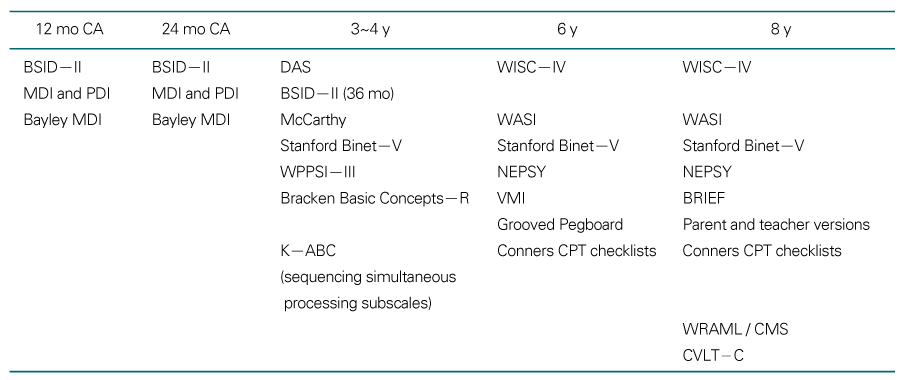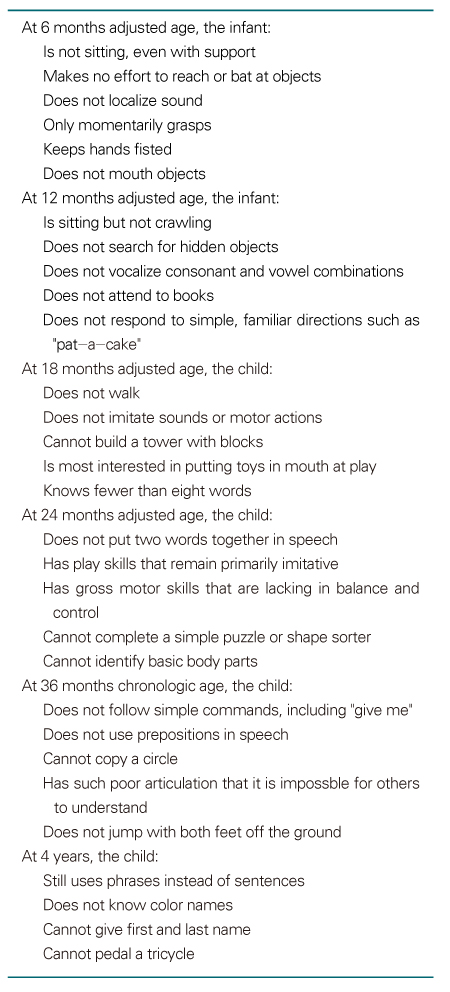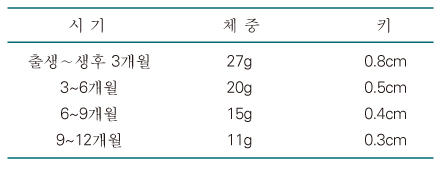1. Jordan IM, Roberta A, Francart J, Sann L, Putel G. Growth in extremely low birth weight infants up to three years. Biology of the Neonate 2005;88:57-65.
2. Carver JD. Nutrition for preterm infants after hospital discharge. Advances in Pediatrics 2005;52:23-47.
3. Schloesser RL, Fischer D, Otto W, Rettwitz-Volk W, Herden P, Zielen S. Safety and immunogenicity of an acellular pertussis vaccine in premature infants. Pediatrics 1999;103:e60.
4. Robertson CT, Etches PC, Goldson E. Eight-year school performance, neurodevelopmental, and growth outcome of neonates with brochpulmonary dysplasia: A comparative study. Pediatrics 1992;89:365.
5. Karz-Salamon M, Gerner EM, Jonsson B, Lagercrantz H. Early motor and mental development in very preterm infants with chronic lung disease. Arch dis Child Fetal Neonatal ed 2000;83:F1-F6.
6. Cloherty JP, Eischenwald ER, Stark AR. Manual of Neonatal Care 2004;5th ed. Philadelphia: Lippincott Williams & Wilkins. 135.
7. Rajput A, Gauderer MW, Hack M. Inguinal hernias in very low birth weight infants: Incidence and timing of repair. J Pediatr Surg 1992;27:1322-1324.
9. Hepatis B. American Academy of Pediatrics. In: Pickering LK, editor. . Red Book: 2003 Report of the Committee on Infectious Diseases 2003;26th ed. Elk Grove Village, Il: American Academy of Pediatrics. 327.
10. Berger SP, Holt-terner I, Cupoil JM, Caring for. Caring for the graduate from the neonatal intensive care unit. Pediatr Clin North Am 1998;45:701-712.
11. Saari TN. the Committee on Infectious Disease. Immunization of preterm and low birth weight infants. Pediatrics 2003;112:193.
12. Wood E, Rosenbaum P. The gross motor function classification system for cerebral palsy: a study of reliability and stability over time. Dev Med Child Neurol 2000;42:292-296.
13. Fenson L, Dale P, Resnick J. MacArthur. Communicative Development Inventories 1993;San Diego, CA: Singular Publishing.
14. Dunn LM. Peabody Picture Vocabulary Test-III 1997;Circle Pines, MN: American Guidance Service.
15. Briggs-Gowan MJ, Carter AS, Irwin JR, Wachtel K, Cicchetti DV. The Brief Infant-Toddler Social Emotional Assessment: screening for social-emotional problems and delays in competence. J Pediatr Psychol 2004;29:143-155.
16. Achenbach TM. Integrative Guide for the 1991 CBCL-4-18 YSR and TRF Profiles 1991;Burlington VT: University of Vermont, Department of Psychiatry.
17. Hack M, Flannery D, Schluchter M, Cartar L, Borawski E, Klein N. Outcomes in young adulthood for very low birth weight infants. N Engl J Med 2002;346:149-157.
18. Shonkoff JP, Hauser-Crane P. Early intervention for disabled infants and their families: a quantitative analysis. Pediatrics 1987;80:650-658.
19. Leventhal T, Brooks-Gunn J, McCormick MC, McCarton CM. Patterns of service use in preschool children; correlates, consequences and the role of early intervention. Child development 2000;70:802-819.














